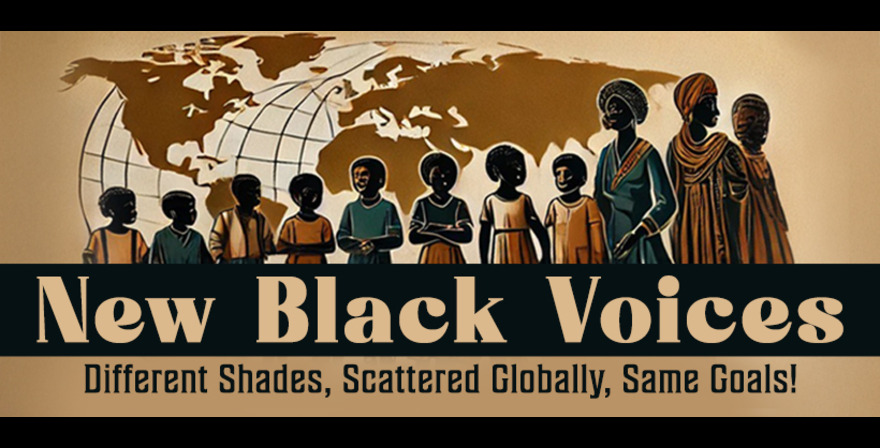In the early 1980s, Lewis Griggs, coined the term diversity and inclusion. In the United States, however, the executive order on issues of diversity date back to 1948 when President Truman gave an executive order that made any form of discrimination based on race, color, religion, or natural origin illegal within the armed forces. Since then, there have been several accomplished milestones. In 1964, the Civil Rights Act made any form of discrimination in the workforce, especially during the hiring or firing within any business, private or public, illegal and in 1987, William Brock, the then Secretary of Labor, authorized Workforce 2000, which gave birth to the diversity industry. Since then, diversity within the workplace is no longer a moral issue but has evolved into a business issue. With several campaigns, strategies, and seminars held to ensure that the question of diversity and inclusion becomes mainstreamed and not just ticked off boxes in the organizational process.
Over the years, the first step towards ensuring workplace diversity is transparency; however, many organizations struggle with ensuring full compliance, promoting uninhibited diversity and inclusive cultures and policies, thereby inhibiting a natural narrative from unfolding within their organizations. Strategies practiced over time to address diversity issues include the diversity reflex; however, inclusion by instinct is a more inclusive strategy promoted due to the complexity in implementing the concept of diversity and inclusion. It focuses on the psychosocial factors involved in the idea of diversity and inclusion and identifies appropriate methods to address these issues. This strategy recognizes the value of the individual within the workplace, not as a work tool but as a human being with unique compositions. It works on the premise of value, respect, and nurture of the individual within an enabling environment, epitomized by good leadership and policies. Which has proven to produce the best in any human within the workforce?
Challenges to Inclusion by Instinct
Despite all the best intentions and apparent advantages of this strategy, the Human Resources department, with the responsibility of ensuring compliance and promoting diversity and inclusion alongside the management team, find this delivery to be an arduous task. Several challenges are known to confront the actual execution and success rate; among them is the issue of difficulty in having a universally acceptable definition for diversity, as the term means different things to different people. Secondly, personal prejudice at all levels within the workforce constitutes a significant barrier and often leads to resistance to any diversity and inclusion programs. Another key barrier is the difficulty in understanding specific terminologies associated with the concept. For instance, with the proliferation of different faiths and doctrines within the Christian faith, defining diversity within the Christian religion becomes challenging, among many other examples.
Importance of Inclusion by Instinct Strategy
Equality in the workplace creates a domino effect, and a combination of diversity and inclusiveness creates a lethal workforce. Evidence shows that diverse companies often perform 35% more than companies that are homogenous in composition. Interestingly, there are specific characteristics commonly associated with such organizations:
First, it is a workplace that deliberately seeks out and includes diverse cultures within its workforce and promotes the value of differences. Such a workplace consciously attracts, recognizes, promotes differences, and ensures that every member is giving their best. Within this organization, the work culture is less punitive and more supportive which encourages the team to give their best. Proven benefits include increased productivity, engaged personnel who can deliver better outcomes to the public, reduced turnover, and fewer absences from sick days. Ultimately, the workplace consists of healthy individuals, which results in increased productivity and eventually increased revenue for the organization.
The strategy of inclusion by instinct thrives on five primary work-environment themes, a situation that:
- All individuals are free to be themselves and thrive in their individuality.
- Encourages all individuals to perform to the best of their abilities
- Where everyone is understood, and individual differences are respected.
- Where uninhibited ideas result in best decisions and challenged with respect.
- Where leaders have been trained and understand the importance of inclusivity, which enables them to create a supportive and flexible working environment for members of the team.
How to Implement Inclusion by Instinct
Going beyond diversity policies that promote positive behavior empowers individuals (like recognitions and awards); regularly conducting culture audits alongside a review of HR policies that strive for best practices used within the organization, are successful techniques. Other verified methods embrace engaging every member of the work team through a continuous internal awareness campaign, coupled with retraining managers in ways that helps them support their team members through the adoption of a smarter approach to work. While others have tried out having a more relevant and agile way of measuring inclusion such that aligns with the changing times and factors like technology in the changing world. For instance, understanding generational differences and traits during the process of hiring to attract and retain talents across generations, the role of socio-economic background, and its effect in the workplace.
Furthermore, widening representation across factors (like age groups, socio-economic knowledge, race, faith and belief, gender, disabilities, status, etc.) all contribute to the creation of an inclusive environment. It is also necessary to build a reasonable and proportional talent channel for attracting people from minority groups by race, gender, disabilities, and expression. Each of these areas of consideration requires a comprehensive and well thought-out plan with emphasis on timelines and quantifiable results.
In conclusion, the best approach to ensure inclusion by instinct in any progressive workplace involves five significant areas: First, broaden demographics in the workplace (across age, socio-economic class, religion, and gender). Secondly, hunt for talented people, sometimes, hidden under the most unassuming appearances. Thirdly, the hiring personnel needs to keep an open mind and find appropriate tools and methods that will yield better results. Fourthly, upon identification and successful hiring process, it is crucial to ensure that the management team remains fully engaged with the team, and this leads to a more humane, enjoyable, and authentic work environment. Finally, constant feedback is essential; such feedback has to be 360 degrees, covering all the different stakeholders, staff, management, clients, and other external bodies like regulatory institutions. Constant feedback contributes to improving any concept and is crucial to any journey towards improvement.
Legal Assistance
If you believe your Civil Rights have been violated, or if you need legal information on Civil Rights issues, please click on the information listed in numbers below. This information is made available through our sponsored show, Ask THE LAWYER. 1. Who Can I Sue? 2. What Is A 50-H Hearing? 3. Filing A Notice Of Claim In New York 4. New York Wrongful Discharge 5. Racial Discrimination 6. Gender Discrimination 7. Mistreatment By Police 8. Jail Neglect & Abuse 9. Racial Profiling 10. Police Misconduct 11. Police Dogs 12. False Arrest – Illegal Detention 13. Excessive Use Of Force By Police 14. Deadly Force
Donate Now to Diversity, Inclusion & Equality
Your support helps defend and protect people who are instinctively denied an opportunity through a functional diversity program. Be a beacon of hope for Diversity, Inclusion & Equality. Donate today. Your Donation is 100% Tax-Deductible. Your tax-deductible donation can also help stop human rights violations. Protect Human Rights. One-time & monthly gifts. All gifts Tax-Deductible. We are a 501(c)(3) charity.
Founded in 2019, D.I.E is a unique operating organization for professionals working in Equal Opportunity, Diversity, Affirmative Action, and related fields. Building on his experience of more than two decades, founder Brian Figeroux, Esq. who has excelled in Civil Rights, Employment Law, Business Law & Development and served as advisor of several Chambers of Commerce in New York City, is taking his work expertise and knowledge to help the public and private sector. Mr. Figeroux endeavors to develop and devise programs where inclusion is instinctive, as Inclusion without Diversity is Inequality, and Equality makes both businesses and government more productive.

